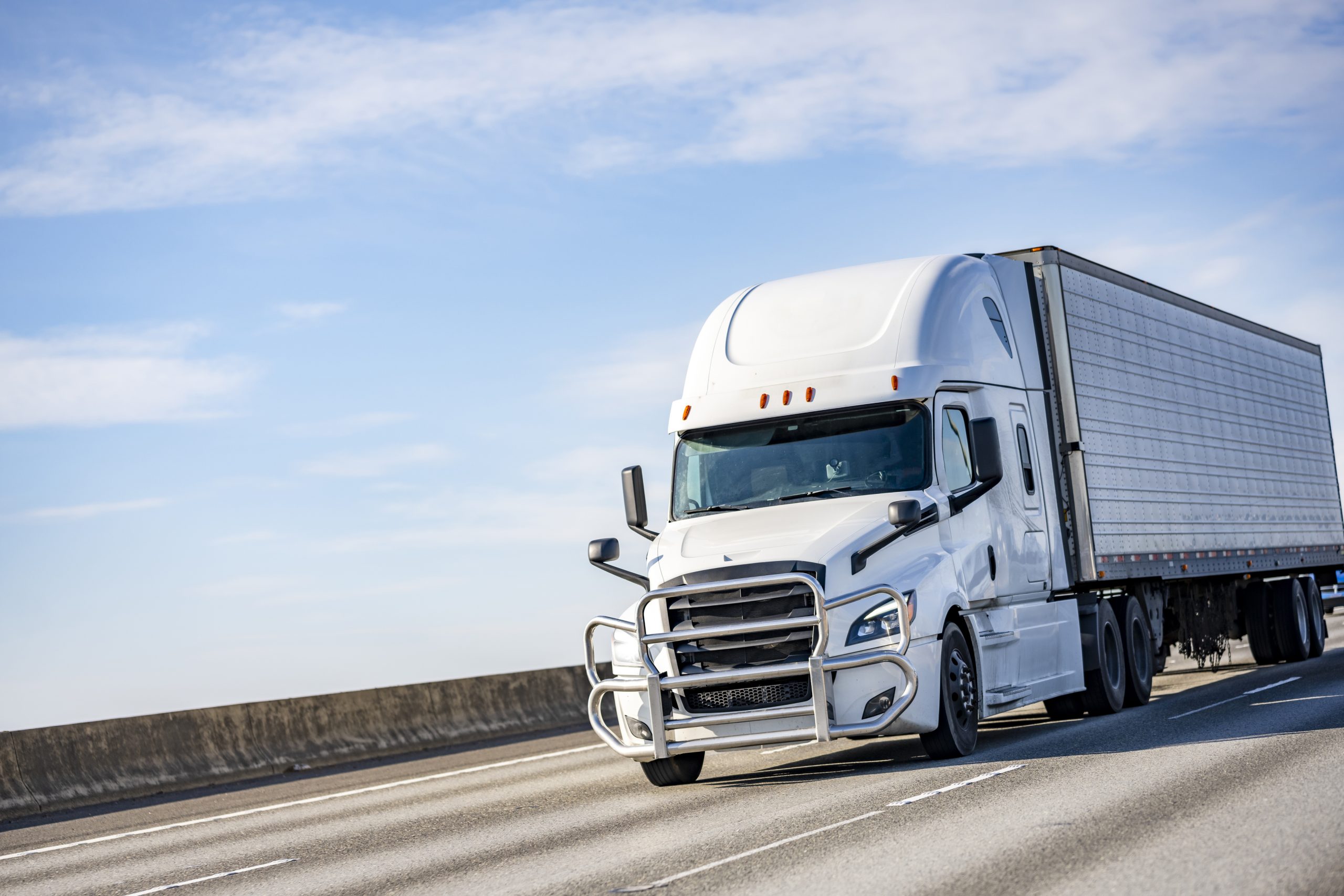
WHAT ARE THE DIFFERENT TYPES OF COMMERCIAL VEHICLES?
Many businesses today rely on commercial vehicles for various operations. According to Statista, unit sales of commercial vehicles are projected to reach 37.75 million in 2025, with a 1.58% increase by 2029. These vehicles make transportation and specialized projects quick and efficient, and directly impact the bottom line of companies that depend on them.
To meet the various industry demands, commercial vehicles come in different sizes, shapes and functions. Some are made to transport people, some for hauling heavy materials and certain specialized vehicles require professional expertise to operate. Read on as we explore everything you need to know about commercial vehicles, the types and how you can choose the right one for your business.
WHAT ARE COMMERCIAL VEHICLES?
Commercial vehicles are primarily used for transporting people and goods for business purposes. They support businesses across multiple industries, making them a valuable asset. To accommodate the diverse demands of these industries, commercial vehicles vary in size, weight, design, and function.
They are also classified into three major categories based on their Gross Vehicle Weight Rating (GVWR):
- Light-Duty Commercial Vehicles: GVWR up to 14,000 lbs
- Class 1: Up to 6,000 lbs
- Class 2: 6,001–10,000 lbs
- Class 3: 10,001–14,000 lbs
- Medium-Duty Commercial Vehicles: GVWR: 14,001–26,000 lbs
- Class 4: 14,001–16,000 lbs
- Class 5: 16,001–19,500 lbs
- Class 6: 19,501–26,000 lbs
- Heavy-Duty Commercial Vehicles: GVWR: 26,001 lbs and above
- Class 7: 26,001–33,000 lbs
- Class 8: Over 33,000 lbs
THE DIFFERENT TYPES OF COMMERCIAL VEHICLES
There are different types of commercial vehicles and the list of every type that exists is almost inexhaustible. These types cut across vehicles used for moving people, goods and the heavy-duty ones used for construction and specialized projects. In the list below, we will try to cover some of the common ones you will find around.
SEMI-TRUCK
Semi-trucks are also called 18-wheelers, big rigs or tractor-trailers. These are vehicles with a tractor unit, or cab in the front, and a bed or trailer attached via a fifth-wheel connection. They are used for long-haul freight between distribution and fulfillment centers.
DUMP TRUCKS
Dump trucks are used in the mining and construction industries for transporting materials such as sand, gravel, debris and coal. Dump trucks are designed with a hydraulic mechanism that helps tilt the truck bed to unload its content.
BOX TRUCK
Box trucks are similar to semi-trucks, but instead of a fifth-wheel connector, their trailers are attached directly to tractors. They feature an enclosed box-like cargo area that is used to store goods for loading items such as furniture and appliances. They are frequently used by businesses for small-scale freight and moving services.
GARBAGE TRUCK
Also called refuse trucks, these specialized vehicles are built for waste collection. They have a unique loading mechanism that is used to lift empty bins into a storage compartment. They also have a compacting system that makes room for hauling more trash on the go, thus efficiently managing waste disposal.
PICKUP TRUCK
Pickup trucks are similar to box trucks, but without enclosed cargo. Instead, they have an open-top bed that can be used to house different cargoes such as construction materials, business tools and equipment.
TOW TRUCKS
Tow trucks cover different types of vehicles, including wrecker trucks that are used for vehicle recovery purposes. These can include damaged, stuck or vehicles that violate traffic laws. Tow trucks come in different shapes and types making them adaptable for any condition where they are needed.
CARGO VANS
These are compact, enclosed vehicles used primarily for delivering goods within urban settings. Cargo vans are designed as a one-piece attached to the driver’s cab and have no rear seating. They offer a spacious interior that allows for secure and efficient transportation of cargo.
VACUUM TRUCKS
Equipped with a powerful suctioning system, vacuum trucks are used to load solids, fluids, sludge and other materials. They are common in sewage management, industrial management and hazardous waste management. They have an attached tank that collects the materials they vacuum until they are transported to the right sites for disposal.
TRANSIT BUSES
These are big transport buses used to accommodate a large number of people. They are often used as a cities’ transport system or as school buses.
FLATBEDS
Flatbeds have an open-air, flat platform that is used to convey oversized and irregularly shaped loads that do not require enclosure or external protection.
STEP VANS
These are commercial vans that have a spacious area that makes it easy for the driver to access the cargo from the cab without having to leave the vehicle. Step vans are popular in the parcel delivery services. They can serve as food trucks and mobile workshops.
PASSENGER VANS
These vans are designed to carry between 9-15 people. They are often used to transport individuals for shuttle services such as tour operations or group transporting.
CRANE TRUCKS
Crane trucks are built with a mounted crane that allows for the efficient loading, lifting and unloading of heavy items like equipment or machinery. They are used in construction, logistics and utilities industries because of how they facilitate the movement of heavy equipment needed for work.
UTILITY AND SERVICE TRUCKS
Includes different types of trucks such as fire trucks, ambulances and maintenance trucks that are equipped with different specialized tools and parts to complete the tasks they are designed for.
CONSTRUCTION AND HEAVY EQUIPMENT TRUCKS
Common types in this category include concrete or cement mixer trucks, drilling rigs, and logging trucks built for specific purposes. They are not built for public roads and are commonly found on the sites where they are utilized.
CHOOSING THE RIGHT COMMERCIAL VEHICLE FOR YOUR BUSINESS WITH INSPIRED FUNDING
Commercial trucks serve different purposes and choosing the right one can impact your business’ profitability and efficiency. From cargo vans, dump trucks, vacuum and tow trucks, there are a lot of options to choose from particularly if you are just considering joining the truck industry. Therefore, this decision should be made meticulously by weighing several factors such as your business needs, the demands of the truck in your region and your interest.
More significant to consider is the financial investment acquiring a commercial vehicle comes with. Commercial truck financing requires many processes and without the right guide, truck owners can make decisions that will put a strain on their finances and business in the long run. That is where Inspired Funding comes in with flexible and tailored financing solutions for different business situations. Also expect a streamlined approval process that makes getting the right truck quick and seamless.
ABOUT INSPIRED FUNDING
If you’re looking for the best financing for your truck business, Inspired Funding is here for you. With tailored financing plans and a range of flexible options, we make it easy for you to get the truck you need and make paying for it a breeze.
Inspired Funding has been helping businesses finance various commercial vehicles, including semi-trucks, cargo vans, dump trucks, and other essential heavy equipment to keep your business moving. We offer competitive interest rates and affordable down payments to fit your budget.
Worried about credit? No problem! We can help you navigate credit score challenges by providing financing solutions designed to get you on the road faster.
Ready to finance a bulldog or a dragon wagon? Give us a call today to get started!


